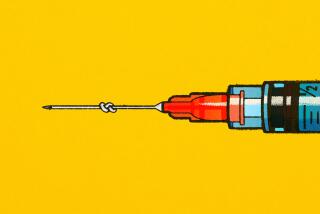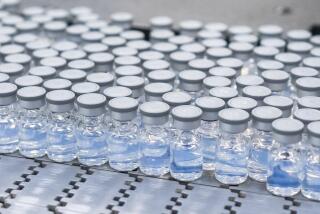Panel urges better warnings on facial fillers
- Share via
WASHINGTON -- — Cosmetic surgery patients who think facial fillers are a magical antidote to aging should be better informed of possible risks, government health advisors said Tuesday.
A panel of independent advisors urged the Food and Drug Administration to revise information for consumers and doctors -- called the product label -- to include the risk of long-lasting reactions such as bumps under the skin, blotches and scars.
“This is almost a no-brainer,” said panel member Dr. Michael Bigby, a Harvard Medical School dermatologist. “The current label is not adequate.” The panel of doctors and other experts unanimously agreed on the need for more safety studies.
The gel-like fillers have become immensely popular with baby boomers. Injected into the face, they smooth away wrinkles. Most patients get a couple of touch-ups a year, at a cost that can easily exceed $1,000 each.
Manufacturers and plastic surgeons say fillers have an excellent safety record. But Tuesday’s FDA hearing raised questions about unapproved uses, untrained technicians giving injections and a lack of long-term safety data. It was a first step as the FDA considers whether to regulate fillers more closely.
Plastic surgeons pledged to help find a new consensus on how to track safety, improve training and provide clearer information to consumers. “We feel it’s time for medicine to step up and take the lead,” said Dr. Richard D’Amico of New Jersey, representing the American Society of Plastic Surgeons.
Women, and some men, are drawn to fillers by the promise of youthful good looks for less cost and trouble than a face lift.
Different from Botox, which is derived from a toxin that acts on facial muscles, wrinkle fillers are like the biological equivalent of a bit of spackle, except that they’re injected. They include such products as Juvederm, made by Allergan Inc., and Restylane, from Medicis Aesthetics Inc.
FDA officials are concerned that fillers are being used for purposes they were never tested nor approved for, not just erasing wrinkles. These include plumping the lips, cheeks and breasts.
“The trouble is that once this material is in the hands of physicians, there’s really not much control over how it’s used and where it’s placed,” said Dr. Scott Spear, a Washington plastic surgeon. “That creates the potential for a certain amount of mischief.
“But the good news is that, by and large, these are very safe materials,” Spear said. “They have a very healthy risk profile.”






